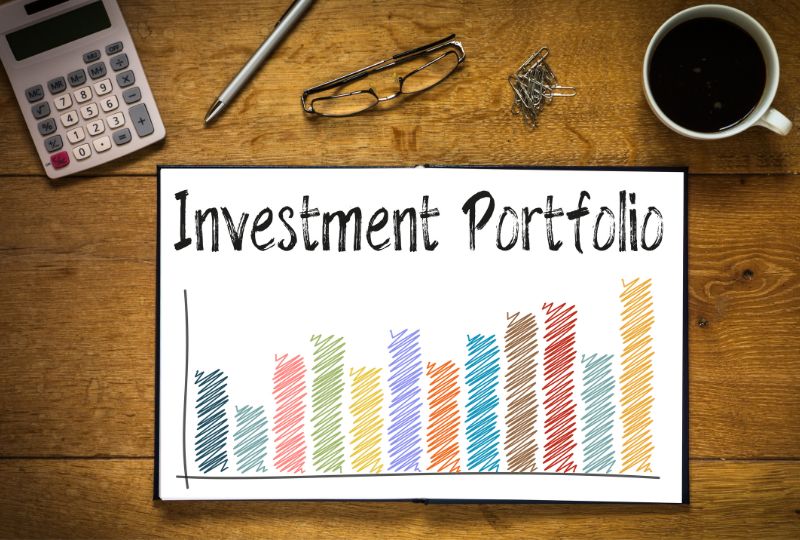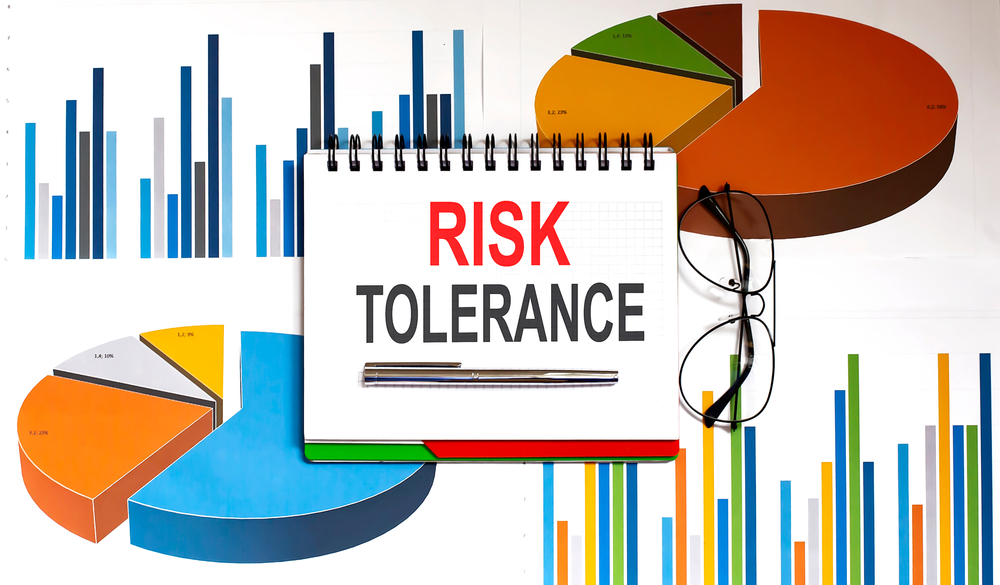
In the context of today’s modern financial landscape, where every decision has the potential to shape the financial destiny of individuals, an investment portfolio stands as an indispensable cornerstone.
Like a finely orchestrated symphony, each asset within the portfolio plays a distinct role, harmonizing together to create financial prosperity. In an increasingly complex world, constructing an effective investment portfolio requires not only market knowledge but also strategic finesse.
Let’s explore deeper into the realm of investment portfolios and how to construct one for beginners.
What Is an Investment Portfolio?

An investment portfolio is a collection of assets you purchase or invest in to generate profits or increase capital value over time, or both.
These assets can include cash deposited into money market accounts or savings accounts, real estate, or anything you can buy through a brokerage account—stocks, exchange-traded funds (ETFs), mutual funds, bonds, cryptocurrencies, and more.
Investment portfolios can be broadly categorized into two main types:
- Strategic Investing: This involves buying financial assets for their long-term growth potential or income returns, or both, to hold onto them for an extended period.
- Tactical Approach: This approach involves active buying and selling to achieve short-term profits.
5 Common Types of Investment Portfolios

When investing, it’s often wise not to put all your eggs in one basket but rather to diversify. This helps reduce risks and often leads to better investment returns.
There are many ways to diversify an investment portfolio. Depending on your future goals, risk tolerance, and appetite for adventure, you may choose a suitable investment portfolio.
Here are five common types of investment portfolios; you can choose one or combine several portfolios to meet your needs.
1. Aggressive Portfolio
An aggressive investment portfolio focuses on high returns and accepts high risks. Stocks in this portfolio typically have a high beta, meaning they fluctuate more than the overall market. You may look for emerging companies with unique value propositions and rapid growth. Risk management is key to success, minimizing losses and taking profits wisely.
2. Defensive Portfolio
Stocks in this portfolio typically have less volatility and a lower beta. Unlike cyclical stocks sensitive to economic cycles, defensive stocks perform well in both favorable and challenging times. No matter how much the economy declines, companies producing essential daily life products will still exist.
3. Income Portfolio
Focused on income from dividends and other investment forms, an income investment portfolio generates positive cash flow. Real estate investment trusts (REITs) and master limited partnerships (MLPs) are examples of income-generating investments. These companies distribute most of their profits to shareholders in exchange for favorable tax treatment. REITs, in particular, offer a way to invest in real estate without the hassle of property ownership.
However, remember that these stocks also depend on economic conditions. REITs are heavily affected during economic downturns.
4. Speculative Portfolio
This portfolio requires accepting more risk and is often likened to gambling. Speculative activities may include participating in initial public offerings (IPOs) or investing in fast-growing companies. Financial advisors often recommend not investing more than 10% of your assets in a speculative portfolio.
5. The Hybrid Portfolio
This type of portfolio includes investing in leveraged exchange-traded funds (ETFs) to increase profit opportunities in a short period. It’s a suitable investment portfolio for investors looking to enter the market quickly.
Regardless of which type of portfolio you choose, building and maintaining it requires effort and patience to increase your long-term financial confidence and control.
Constructing an Investment Portfolio for Beginners in 6 Steps
Building an investment portfolio can be broken down into simple steps for easy understanding. Each step positions you for success with the next one. Ultimately, this approach enhances your chances of creating a portfolio that resonates with your investment style and desired objectives.
Step 1: Start with Your Goals and Timeframe

When constructing an investment portfolio, the initial step is to list down your financial objectives. Brian Robinson, a Certified Financial Planner (CFP) at Sharpepoint, emphasizes, “Without clear end goals, the reason for investing becomes inconsequential.”
Once you’ve identified your goals, arrange them by time horizon, which indicates how long you need to hold the investments until you require the funds:
- Short-term goals: Those needing funds within 12 months.
- Mid-term goals: Require 1 to 5 years for completion.
- Long-term goals: Take over 5 years to achieve.
For instance, if you’re saving for retirement in 30 years but need to buy a new car this year, you have a long-term and a short-term goal.
Step 2: Understand Your Risk Tolerance

Now that you know when you need funds for each goal, you can determine your risk tolerance – how much you’re willing to lose in the short term to achieve each goal.
Denis Poljak, CFP at Poljak Group Wealth Management, notes, “The longer the timeframe, the more resolute you can be, as there’s additional time to recover from short-term losses.” Short-term goals often require a more cautious approach because you can’t afford to risk what you’ve saved.
Risk tolerance operates in tandem with the investment timeframe. For example, if you’re saving for retirement in 30 years, being overly risk-averse might impede your savings goal. But if retirement is 5 years away, accepting too much risk could mean losses without the chance to recover.
Ultimately, your risk tolerance balances what’s necessary to achieve your goals with your comfort level amidst market fluctuations.
Step 3: Match Account Types to Your Goals
Before selecting investments, you need a place to hold your funds. That’s why you need to build your investment portfolio with accounts that align with your investment goals:
- Deposit accounts like savings accounts, money market accounts, and high-yield savings accounts are suitable for short-term goals where you seek some growth but can’t risk losing funds.
- Taxable online brokerage accounts are suitable for mid-to-long-term goals where you aim for higher potential returns than a lower-risk deposit account.
Step 4: Select Investments

Now it’s time to apply your goals, timeframe, and risk tolerance when choosing investments to meet your objectives.
Stocks: Stocks represent ownership in a publicly traded company. You can purchase stocks from thousands of companies based in Vietnam and abroad. They tend to be riskier investments but also offer higher potential for value appreciation compared to bonds or cash alternatives.
Bonds: Bonds turn investors into lenders. Buying bonds means lending money to a company, organization, or municipality. In return, the issuer pays interest on your loan until they fully repay it. Bonds typically carry less risk than stocks, but there are higher-risk bonds like junk bonds.
Funds: If you lack the expertise to buy individual stocks or bonds or prefer to diversify risk among many stocks and bonds, you can invest using Exchange-Traded Funds (ETFs) and mutual funds. These investments represent baskets of securities. Your risk level will vary depending on the type of fund.
Alternative Investments: If you can dream it, you can invest in it. From precious metals like silver and gold to real estate, cryptocurrencies, hedge funds, and even commodities like wheat, there are many investment avenues beyond stocks and bonds to diversify your portfolio. Alternative investments often carry higher risk than stocks and bonds.
Cash and Cash Alternatives: Investments like savings accounts, certificates of deposit (CDs), and money market funds offer minimal risk but earn modest returns.
Read more: The Best Sectors to Invest in 2024: Unveiling Lucrative Opportunities
Step 5: Create Asset Allocation and Diversification

After deciding on the types of investments you want in your portfolio, it’s time to determine how much of each you should buy. Allocate your funds in a way that allows you to limit losses.
For example, if you have a high-risk tolerance and a 30-year timeframe, you might allocate 90% to stocks and 10% to bonds. Someone with a moderate risk tolerance might choose a portfolio that’s 60% stocks and 40% bonds.
Step 6: Monitor, Rebalance, and Adjust

Pressing “buy” isn’t the end; your investment portfolio still needs ongoing attention and care. That’s why regularly monitoring and adjusting your investment portfolio is crucial.
For instance, you might review your investment portfolio twice a year to ensure asset allocation still aligns with your goals. You may need to rebalance your holdings if the market fluctuates.
Life events like marriage or divorce, becoming a parent, receiving an inheritance, or nearing retirement may also prompt a reassessment of your current investment strategy. The best investment portfolios grow and flourish like indoor plants – with regular nurturing, attention, and occasional fertilizer throughout their development journey.






